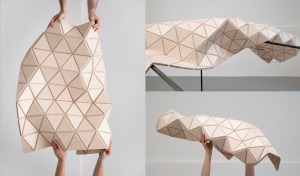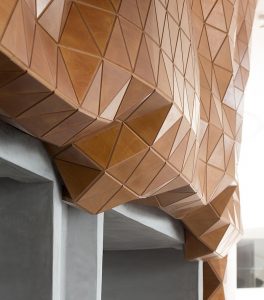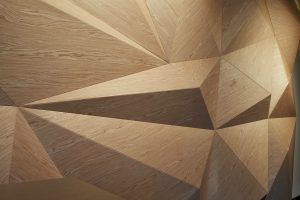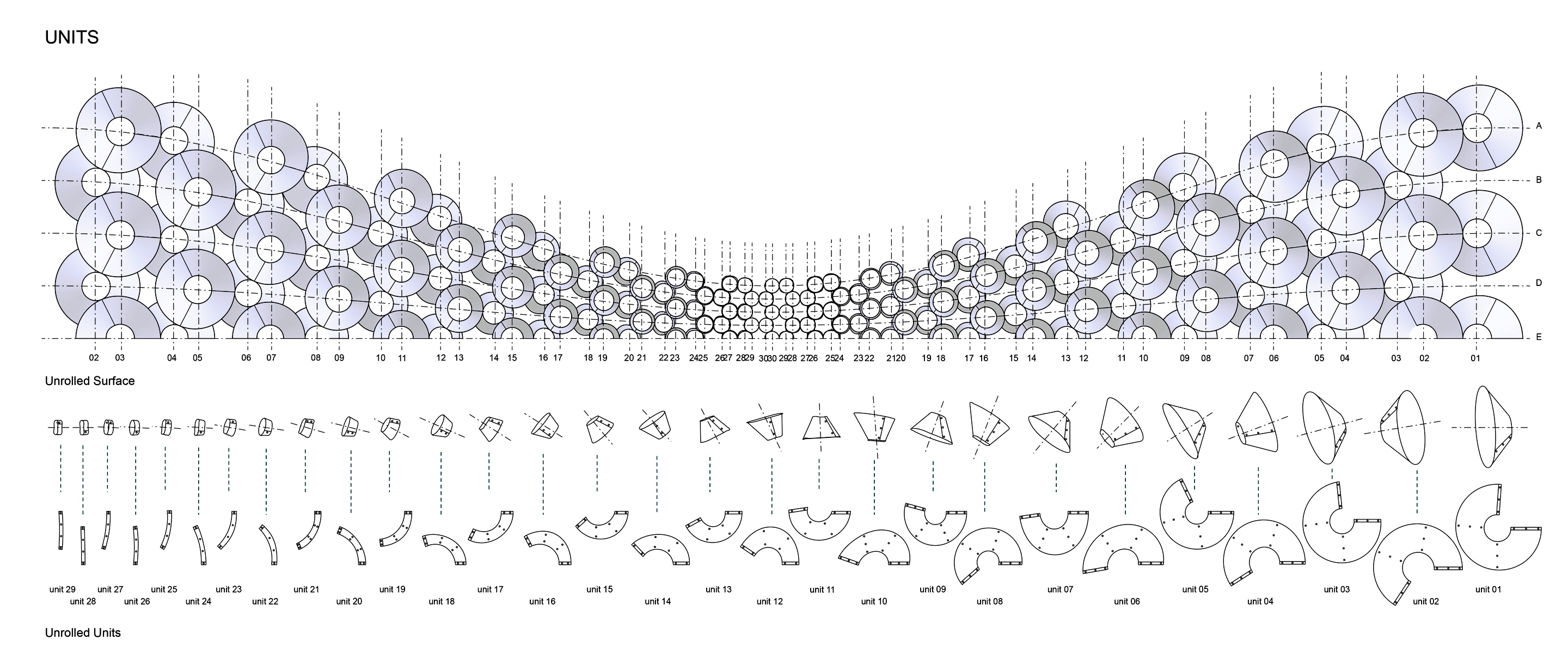liz maday project 3 sketch
//Elizabeth Maday
//emaday@andrew.cmu.edu
//Section A
//emaday
function setup() {
createCanvas(640, 480);
}
function draw() {
var distance = int(dist(width/2, height/2, mouseX, mouseY));
var vineTipX = 0;
var vineTipY = 0;
var x = width/2;
var y = height/2;
var r = 0;
var g = 170;
var b = 245;
var eyeSize = 5;
//make color get darker as mouse moves up
if (mouseY < y) {
r -= 0;
g -= distance/2;
b -= distance/2;
//make color lighter as mouse moves down
} else if (mouseY > y) {
r += distance/2;
g += distance/2;
b += 0;
}
background(r, g, b);
//make vines move left and right
if (mouseX > x) {
vineTipX += distance;
}
if (mouseX < x) {
vineTipX -= distance;
}
//make vines move up and down
if (mouseY > y) {
vineTipY += distance;
}
if (mouseY < y) {
vineTipY -= distance;
}
//change eyeSize
if (mouseY < y) {
eyeSize = 4;
}
if (mouseY > y) {
eyeSize = 10;
}
//draw triangles left
noStroke();
fill(0, 97, 85);
triangle(0, 50, 0, 85, 200 + vineTipX, 65 + vineTipY);
triangle(0, 100, 0, 135, 240 + vineTipX, 115 + vineTipY);
triangle(0, 150, 0, 185, 280 + vineTipX, 165 + vineTipY);
triangle(0, 200, 0, 235, 320 + vineTipX, 215 + vineTipY);
triangle(0, 250, 0, 285, 360 + vineTipX, 265 + vineTipY);
triangle(0, 300, 0, 335, 320 + vineTipX, 315 + vineTipY);
triangle(0, 350, 0, 385, 280 + vineTipX, 365 + vineTipY);
triangle(0, 400, 0, 435, 240 + vineTipX, 415 + vineTipY);
//draw triangles right
fill(0, 192, 58);
triangle(550 + vineTipX, 40 + vineTipY, 640, 15, 640, 50);
triangle(510 + vineTipX, 90 + vineTipY, 640, 65, 640, 100);
triangle(460 + vineTipX, 140 + vineTipY, 640, 115, 640, 150);
triangle(410 + vineTipX, 190 + vineTipY, 640, 165, 640, 200);
triangle(460 + vineTipX, 240 + vineTipY, 640, 215, 640, 250);
triangle(510 + vineTipX, 290 + vineTipY, 640, 265, 640, 300);
triangle(550 + vineTipX, 340 + vineTipY, 640, 315, 640, 350);
triangle(600 + vineTipX, 390 + vineTipY, 640, 365, 640, 400);
//draw sun around mouse
fill(255, 188, 0);
stroke(255, 188, 0);
strokeWeight(7);
line(mouseX, mouseY, mouseX + 30, mouseY + 30);
line(mouseX, mouseY, mouseX - 30, mouseY - 30);
line(mouseX, mouseY, mouseX + 30, mouseY - 30);
line(mouseX, mouseY, mouseX - 30, mouseY + 30);
line(mouseX, mouseY, mouseX + 42.5, mouseY);
line(mouseX, mouseY, mouseX - 42.5, mouseY);
line(mouseX, mouseY, mouseX, mouseY + 42.5);
line(mouseX, mouseY, mouseX, mouseY - 42.5);
strokeWeight(2);
ellipse(mouseX, mouseY, 40, 40);
//draw sun face
stroke(0);
line(mouseX - 10, mouseY + 3, mouseX + 10, mouseY + 3);
fill(0);
ellipse(mouseX - 8, mouseY - 5, eyeSize, eyeSize);
ellipse(mouseX + 8, mouseY - 5, eyeSize, eyeSize);
//draw fish
var dist2 = (0, 100, mouseX, mouseY);
noStroke();
ellipseMode(CENTER);
fill(0);
triangle(dist2 + 13, 400, dist2 + 25, 385, dist2 + 25, 415); //bottom fish tail
fill(255, 73, 177);
ellipse(dist2, 400, 30, 30); //bottom fish body
fill(0);
ellipse(dist2 - 5, 400, 5, 5); //bottom fish eye
fill(0);
ellipse(dist2 + width/2 + 13, 80, 17, 12); //top fish tail
fill(255, 121, 0);
ellipse(dist2 + width/2, 80, 30, 30); //top fish body
fill(0);
ellipse(dist2 - 5 + width/2, 80, 5, 5); //top fish eye
}
With this project, I liked how I was able to play around with a concept. The sun image represents sunlight entering an underwater scene, and all the other elements react to its position.


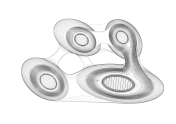
![[OLD FALL 2018] 15-104 • Introduction to Computing for Creative Practice](../../../../wp-content/uploads/2020/08/stop-banner.png)

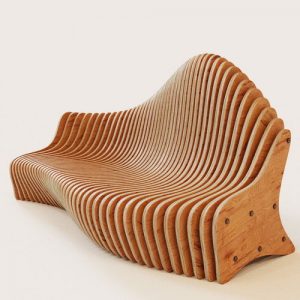
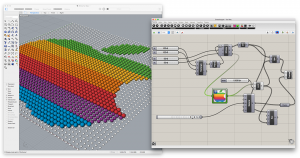
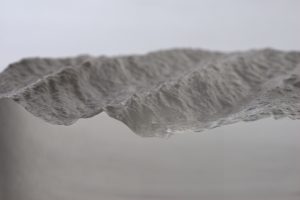
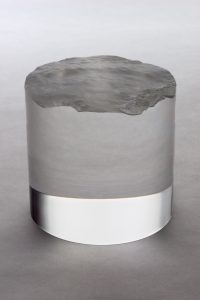
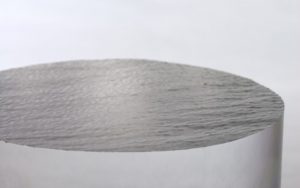
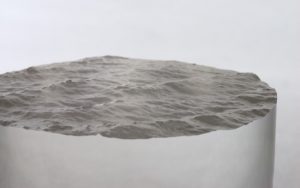
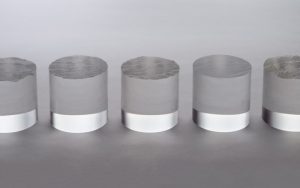 This work was created by David Bowen over a course of a few days which involved a drone running ArduPilot software; it hovered 30 meters above Lake Superior and captured still images of the water’s surface. The surface ripples changed every time the weather was different and Bowen captured these images and converted them into three-dimensional displacement maps. The information was carved with a CNC router into a series of transparent acrylic cylinders.
This work was created by David Bowen over a course of a few days which involved a drone running ArduPilot software; it hovered 30 meters above Lake Superior and captured still images of the water’s surface. The surface ripples changed every time the weather was different and Bowen captured these images and converted them into three-dimensional displacement maps. The information was carved with a CNC router into a series of transparent acrylic cylinders.
